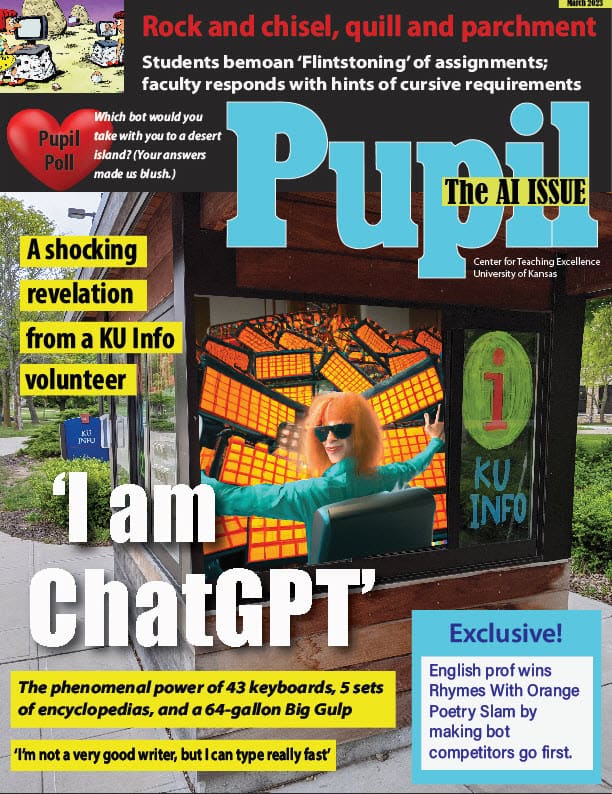In this issue of Pupil, we mock the Age of AI Anxiety
In this issue of Pupil, we mock the Age of AI Anxiety

We just looked at our office clock and realized that it was already March.
After we did some deep-breathing exercises and some puzzling over what happened to February, we realized the upside of losing track of time:
Spring break is only days – yes, days! – away.